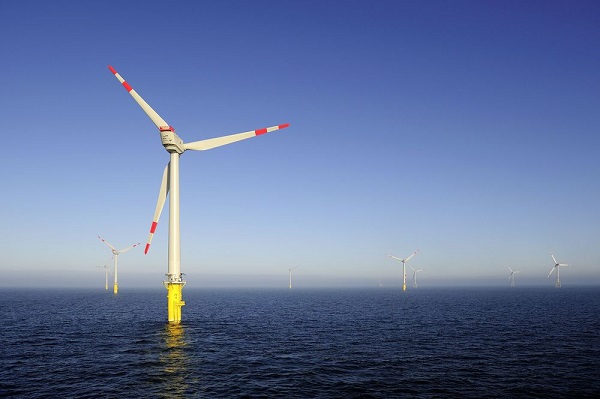Offshore wind power has hit a rough patch in Europe. There have been troubles with basking sharks and red-throated divers, but mostly there have been challenges in making the difficult technology economically viable. Nevertheless, a couple of items popped up in the last few days that provide a reminder as to what makes the offshore wind so exciting and potentially important.
First, there was the compilation of Danish offshore wind farm capacity factors published on the Energy Numbers website.

Capacity factor, as many EarthTechling readers know, is a measure of how much energy a generator produces over a period of time as a percentage of the maximum it could produce. So you take the total amount of energy produced in, say, a year, and divide by the amount of power the generator would produce had it run continuously at 100 percent.
Wind power capacity factors vary considerably by site, but generally people think around 30 to 35 percent when they talk about capacity factors for wind. But in Denmark in 2013, 13 offshore wind farms, totaling installed capacity of 1,271 megawatts, together had a capacity factor of 42.7 percent.
Yes, offshore wind power is costly now to build – too costly (Bloomberg New Energy Finance puts the megawatt-hour cost at $246). But with capacity factors of well over 40 percent, you can see the lure. You can see that with its ability to produce large amounts of power, offshore wind power deserves the effort and expense it will take to innovate and reduce costs.
The point was brought home, as well, last week with a press release from the Alpha Ventus offshore wind farm. Germany’s first wind farm – owned by EWE, E.On and Vattenfall – the 60-MW capacity Alpa Ventus began full operation in April 2010 and on Feb. 21 it announced it had reached 1 terawatt-hour of generation. And it’s doing better than expected:
The average yield of the offshore wind farm in 2011 through 2013 was 253.14 gigawatt-hours per annum, exceeding the forecast yield by approximately 10 per cent. The capacity factor of the wind farm of 48.1 per cent during this period is an outstanding result by international standards.
This is a pretty remarkable record of achievement – a beacon of hope, perhaps, amid the gloom that surrounds the sector.